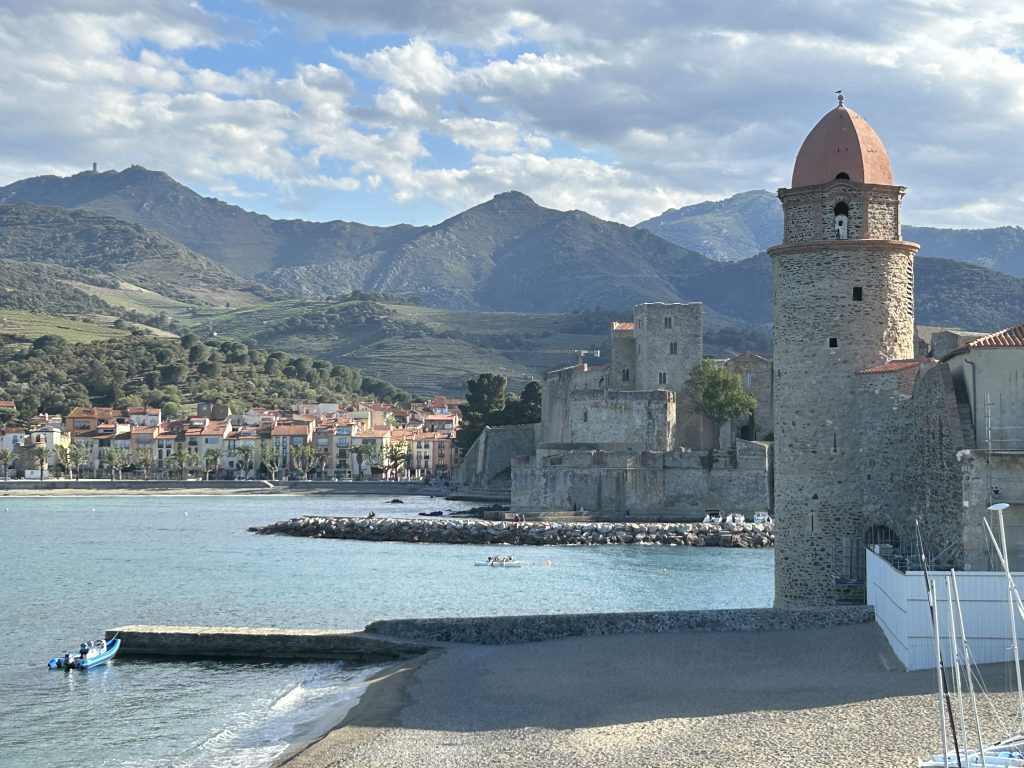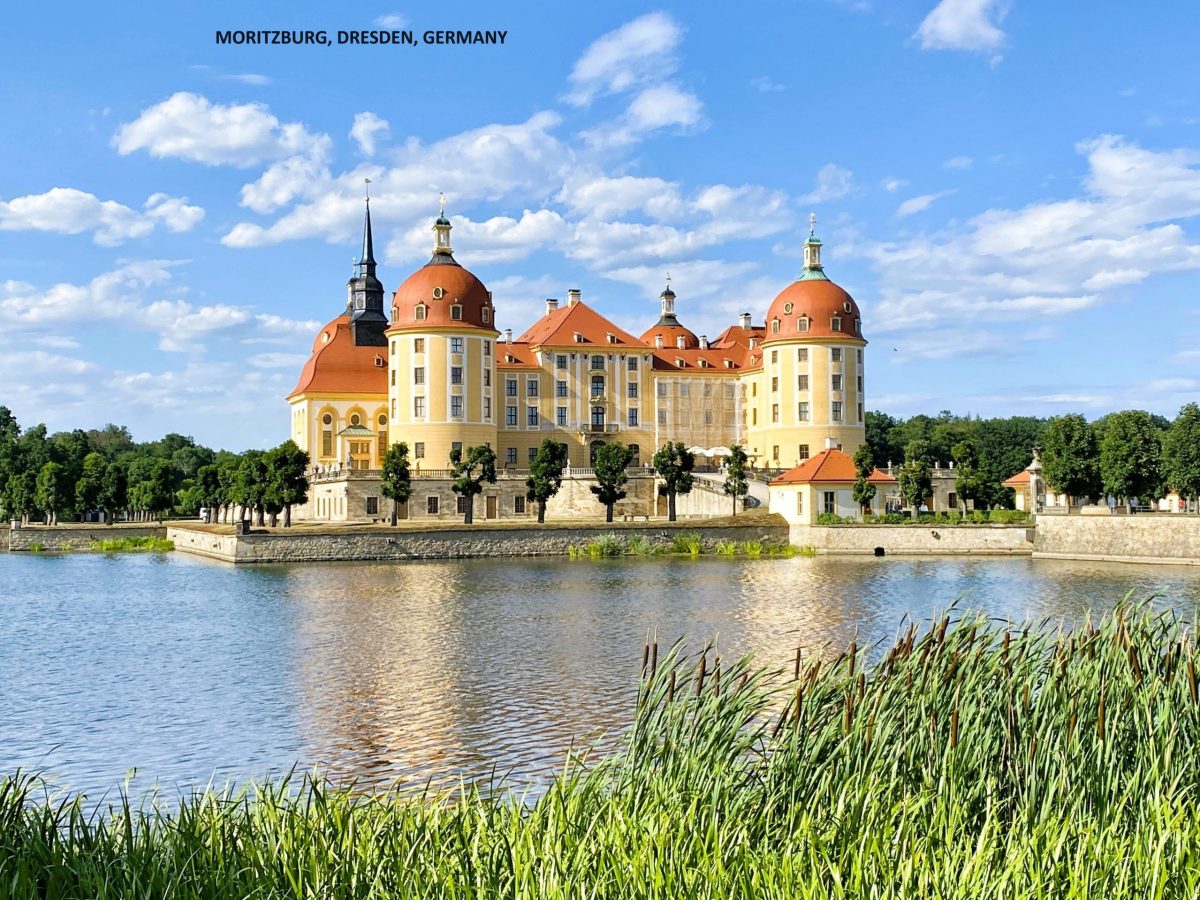Collioure is one of France’s best kept secrets. Nestled in a sheltered bay on the Catalan Coast with turquoise coloured waters and a dark green backdrop which are the Alberes Mountains, it’s a picture perfect little fishing town (anchovies) now given over to tourism (although only the French seem to know about it). It’s the smallest and most picturesque of the Cote Vermeille resorts and one of the most adorable coastal towns I have ever visited.
My first trip into Collioure saw me enter the town from the north. I walked the cliff tops from Camping Les Criques de Porteils, down onto the Plage de L’Ouille and then upwards and onwards past the CNEC military base (the Commando Training Centre) and into the town near the large fortress that is the Chateau Royal de Collioure.
The Knights Templar built the Chateau Royal early in the 13th century (1207?) and it was extended during the next 300 years, first by the Kings of Mallorca and then by the Spanish Hapsburgs. It is probably four castles in one now. I didn’t have time to explore the inside of the fortress on this occasion.
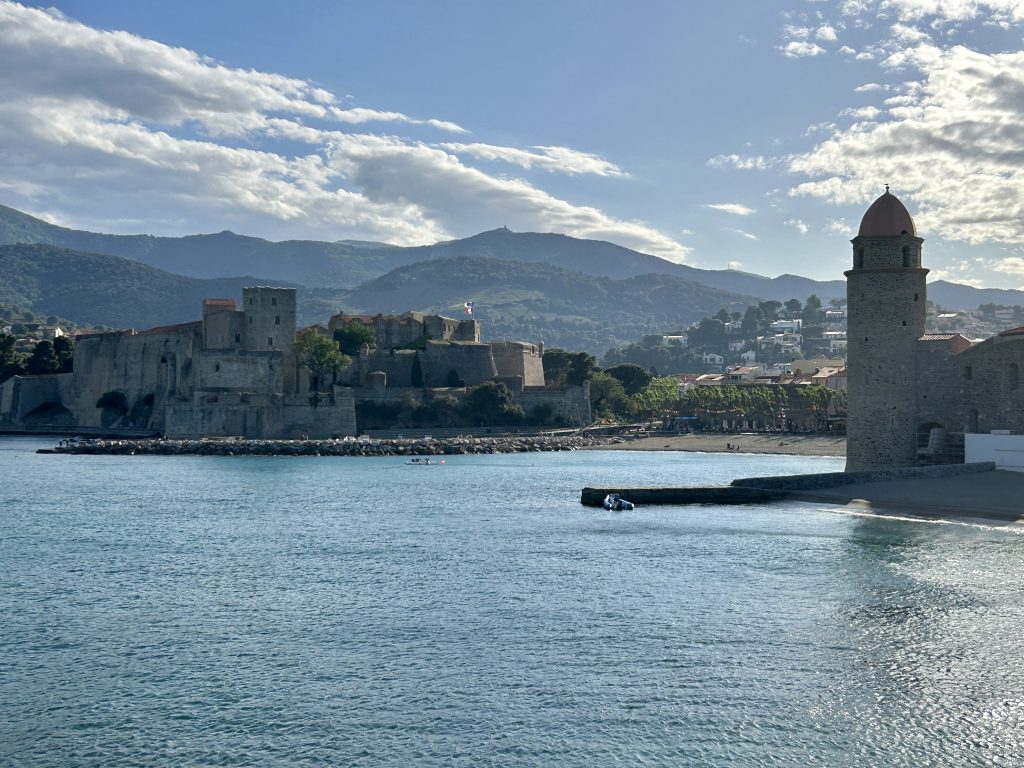
The Chateau Royal is on the left, towering over the Ansa de la Baleta Bay.
After gaining my bearings and taking numerous photos of the fortress and the 17th century Notre Dame des Anges church (i.e. the Church of our Lady of the Angels) – none of them very good – I followed a narrow path under the fortress walls and around the bay towards the southern edge of Collioure. I should say here that I didn’t see the church in it’s best light (it was covered in scaffolding, inside and out) but the Baroque interior is worth a look.
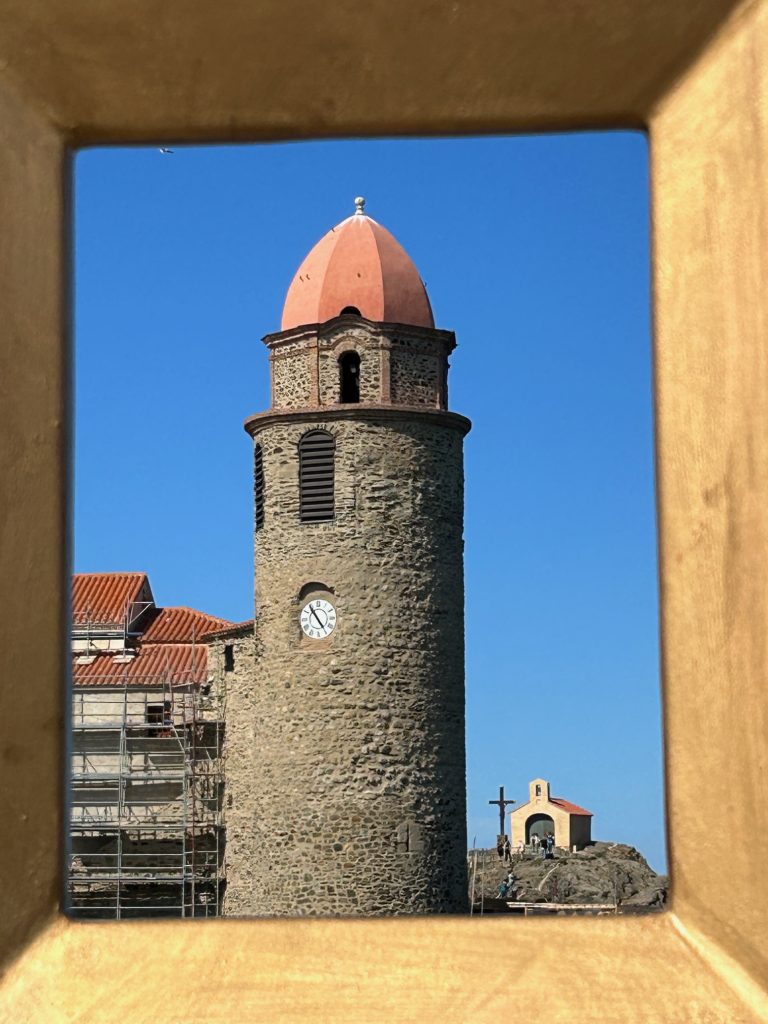
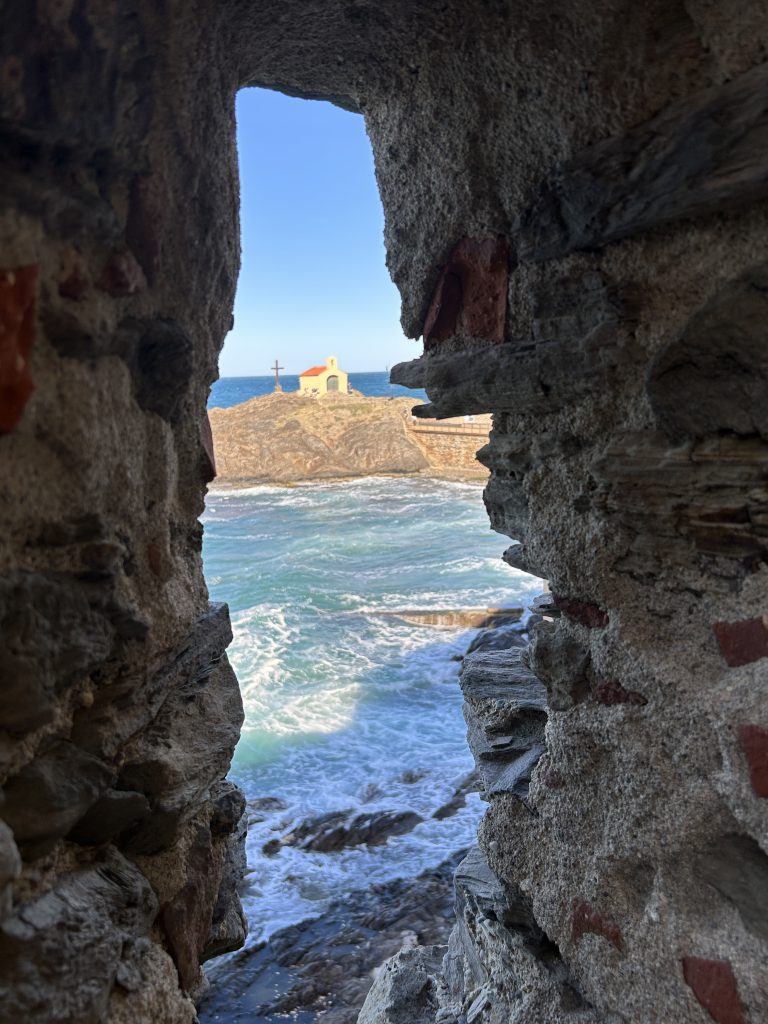
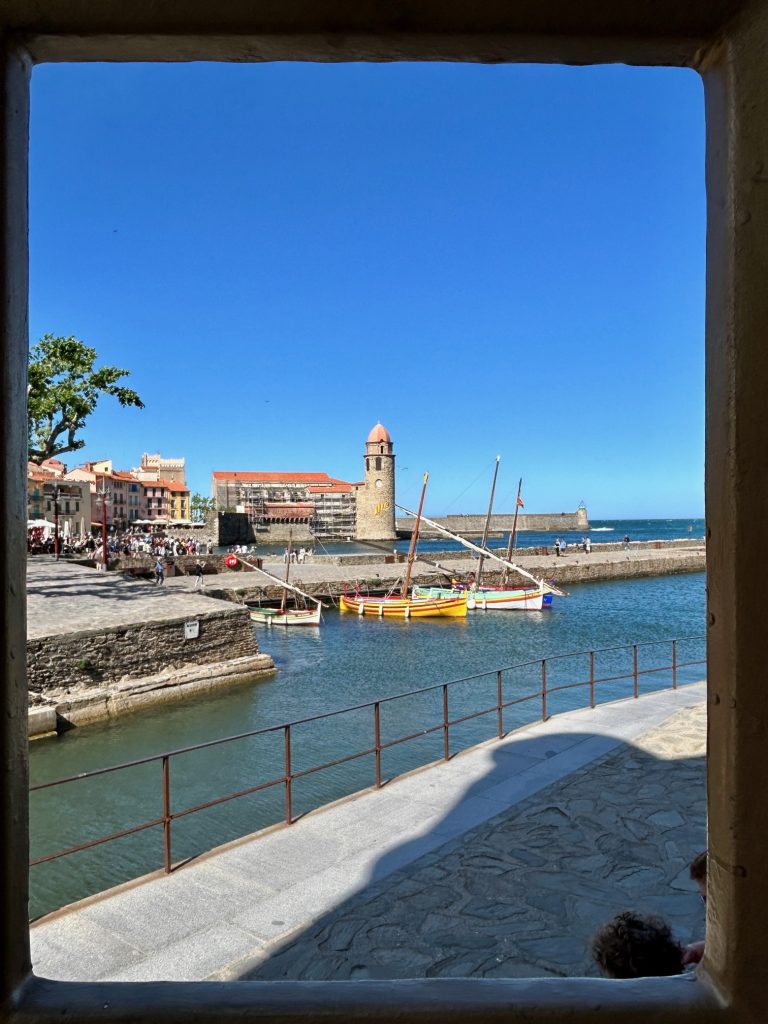
Left: The Bell Tower of the Church of our Lady of the Angels with the Saint Vincent Chapel caught behind it. Centre: The Saint Vincent Chapel photographed through a hole in the town walls. Right: The Church again with Lateen boats in the foreground.
This path under the fortress walls took me to another beach, the Plage de Port d’Avall (there are four or five small beaches in Collioure), and then on down the Rue Jean Bart to a terrific little bar with excellent views back across to the main part of the town.
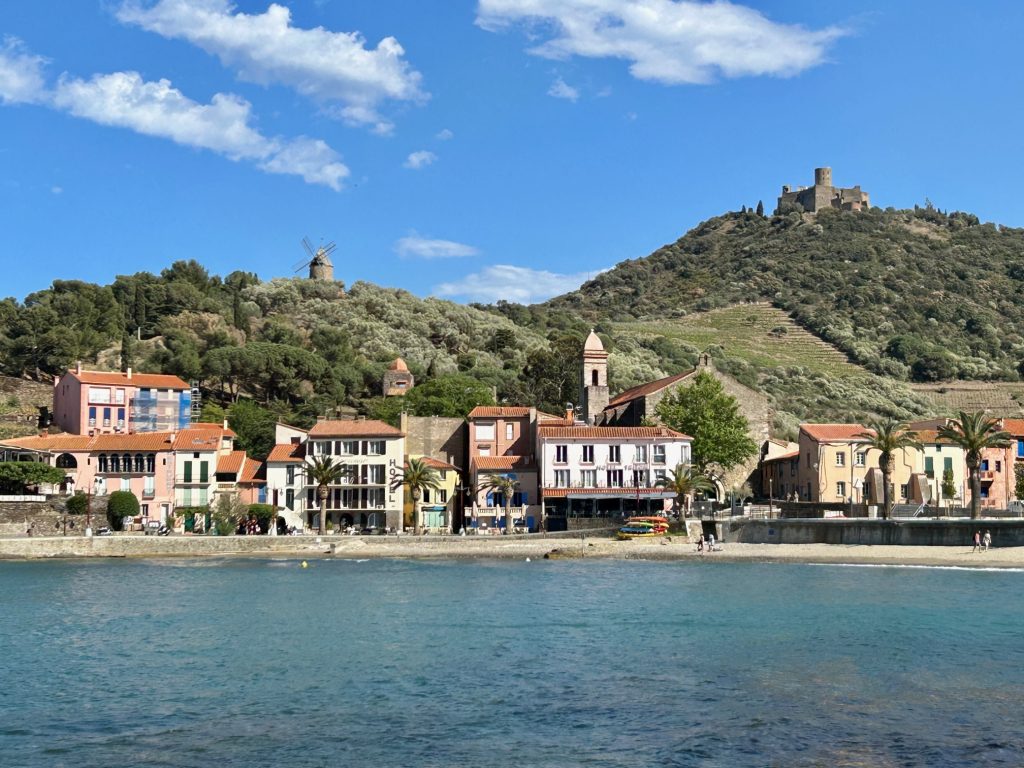
That beach is the Plage de Port d’Avall and up on the hills behind is the 14th century Moulon de Collioure (a grain mill restored in 2001 and which is now used to produce the local olive oil) and yet another Templar Fort (Fort Saint Elme).
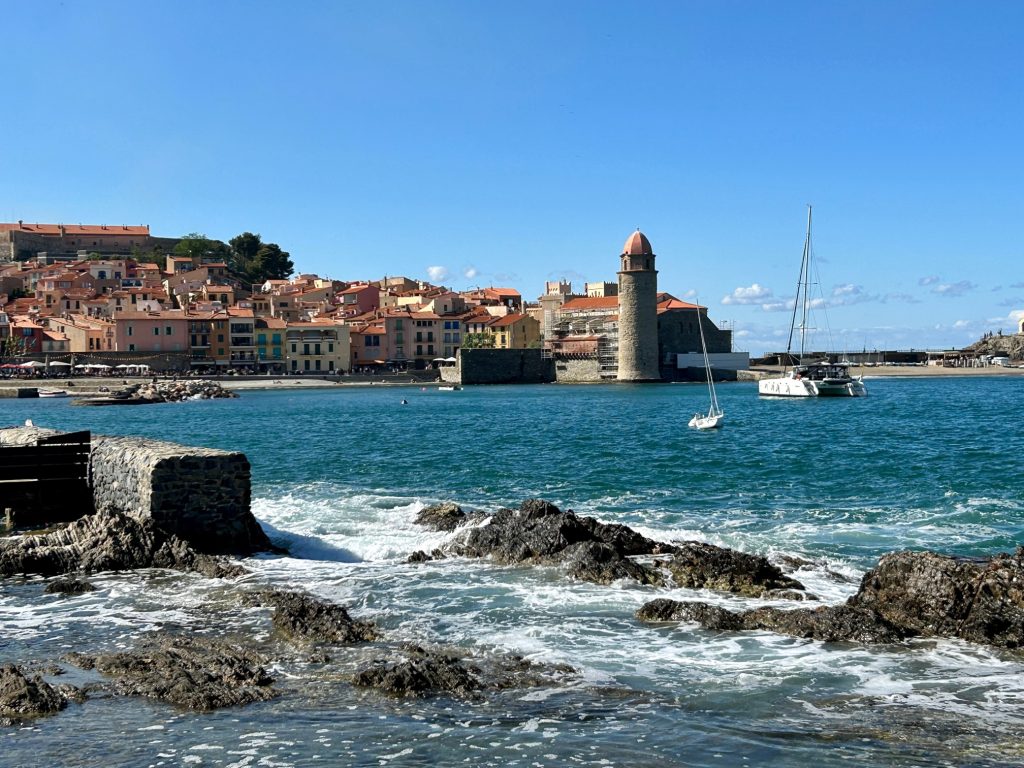

That’s the view of the church across the bay from the little bar I paused at and…
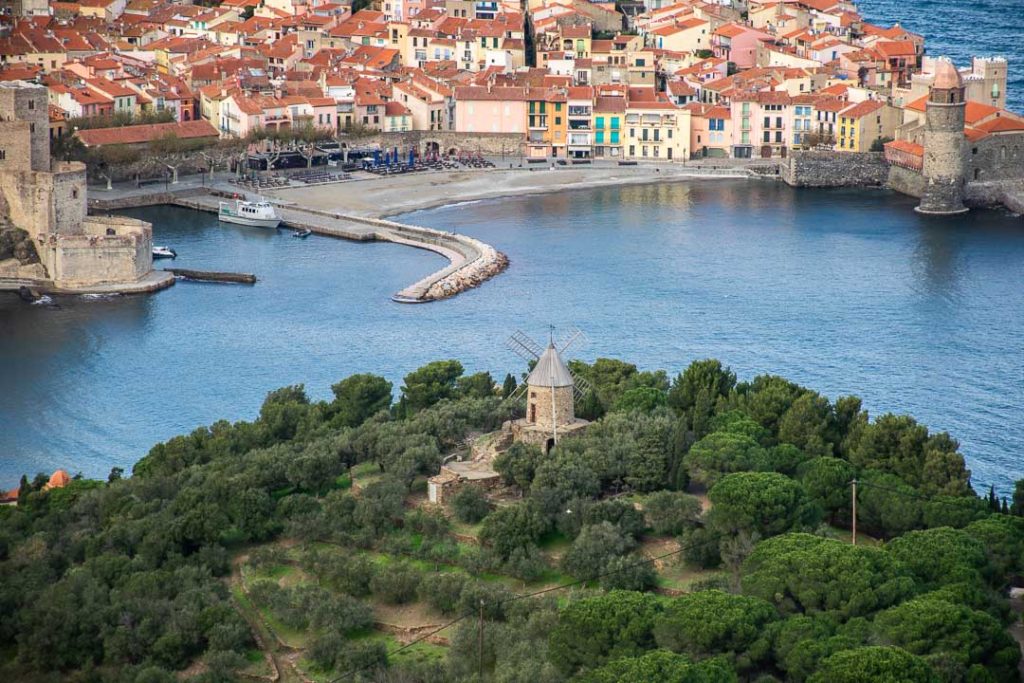
…that’s a view from Fort Saint Elme (not mine – I gave up because the sun was simply too bright). The views from up on the hill are breathtaking.
Anyway, after refreshing myself with another (smaller) beer back at the bar I set off to explore the town itself.

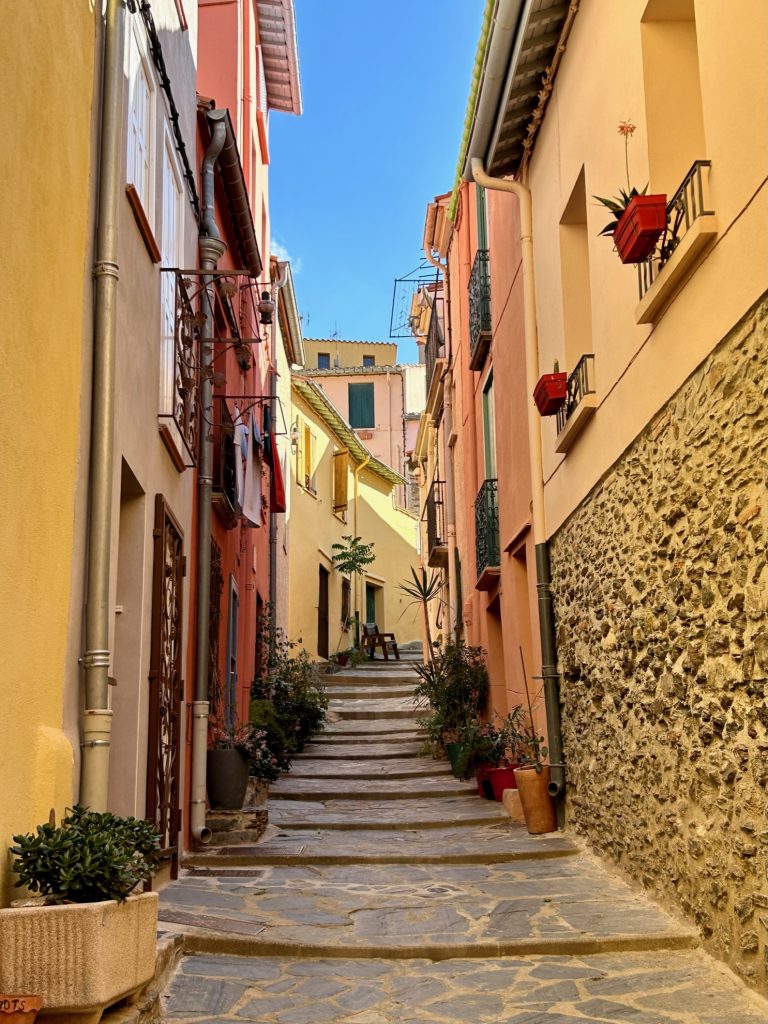
The lanes behind the Plage de Port d’Avall are largely residential and the houses are invariably painted varying shades of red, orange and/or yellow and…

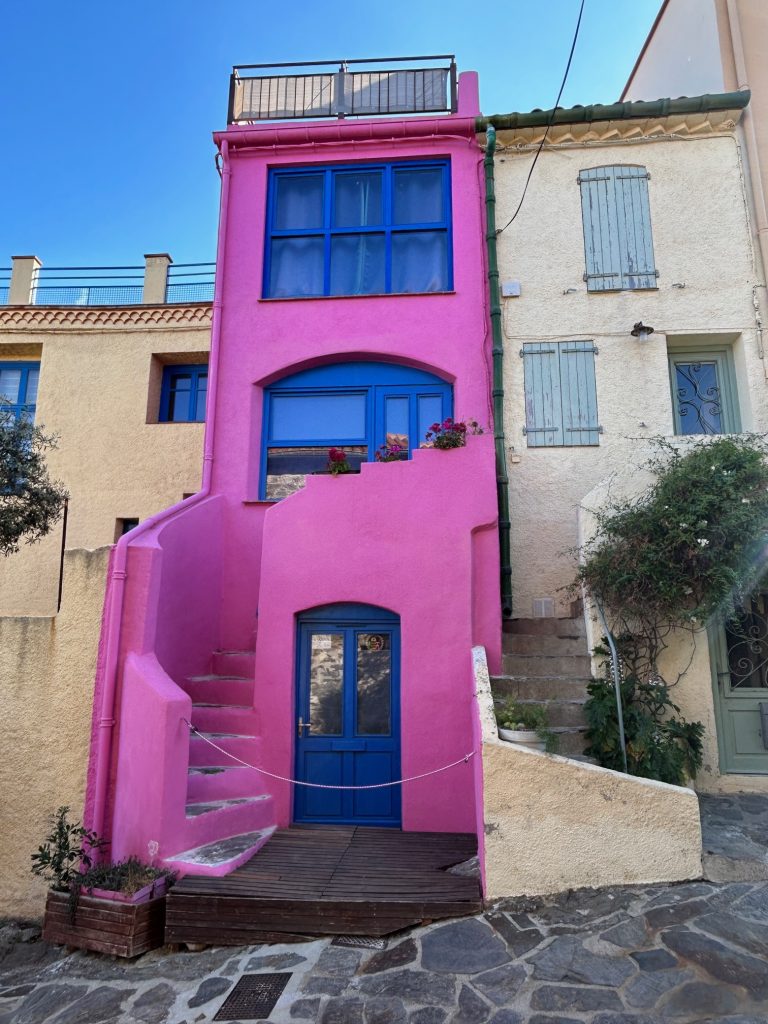
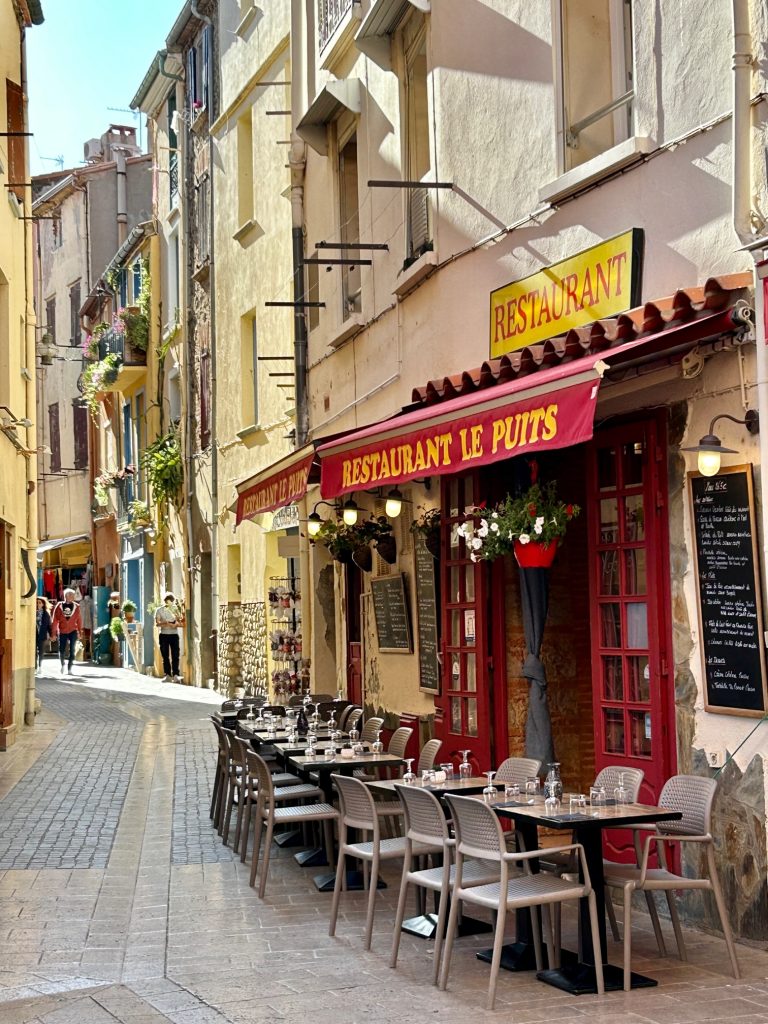
… the buildings in the centre of Collioure, whether residential or commercial, tend to carry more vibrant colours and, by order of the town council, none may be painted black or white.
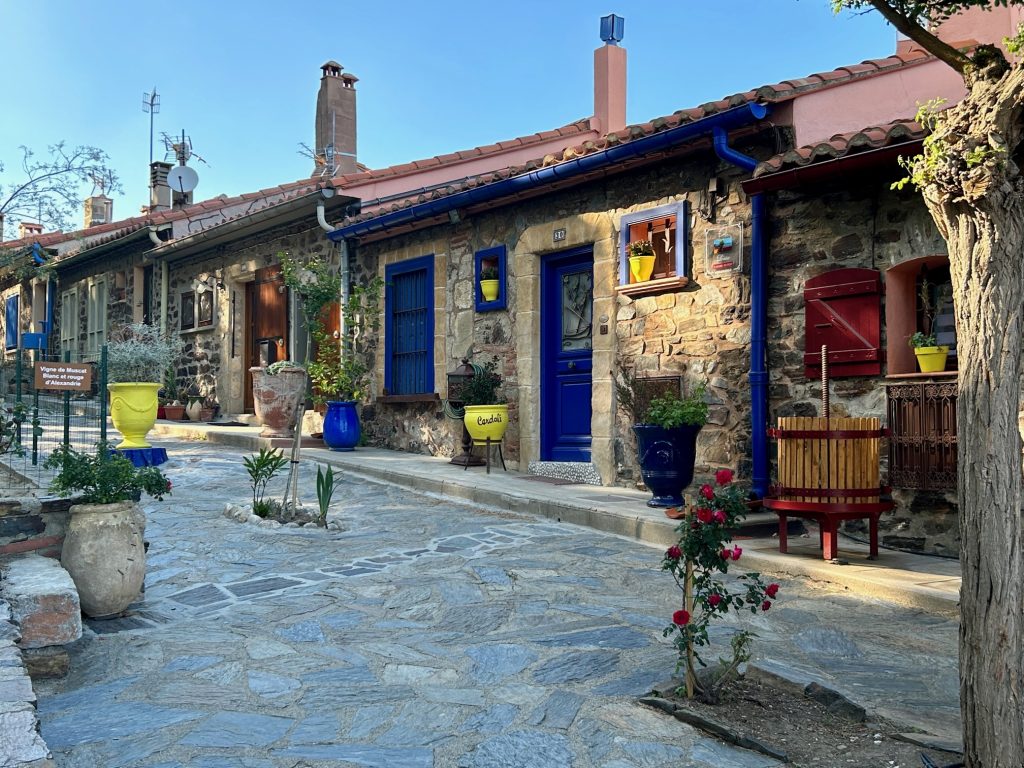
Some of the streets are truly striking. Perhaps unsurprisingly, this particular area of the town is known locally as ‘La Petite Montmartre’.
Around 1904/1905 the artists Henri Matisse and Andre Derain were inspired by the light and colours of Collioure to create what subsequently became known as the fauvist style of painting – they used strong colours and fierce brushwork and sometimes even applied colour directly from the paint tube. These painters were considered wild beasts of the art world by certain critics and with ‘fauve’ being French for the ‘wildcat’, so the Fauvists were formed.
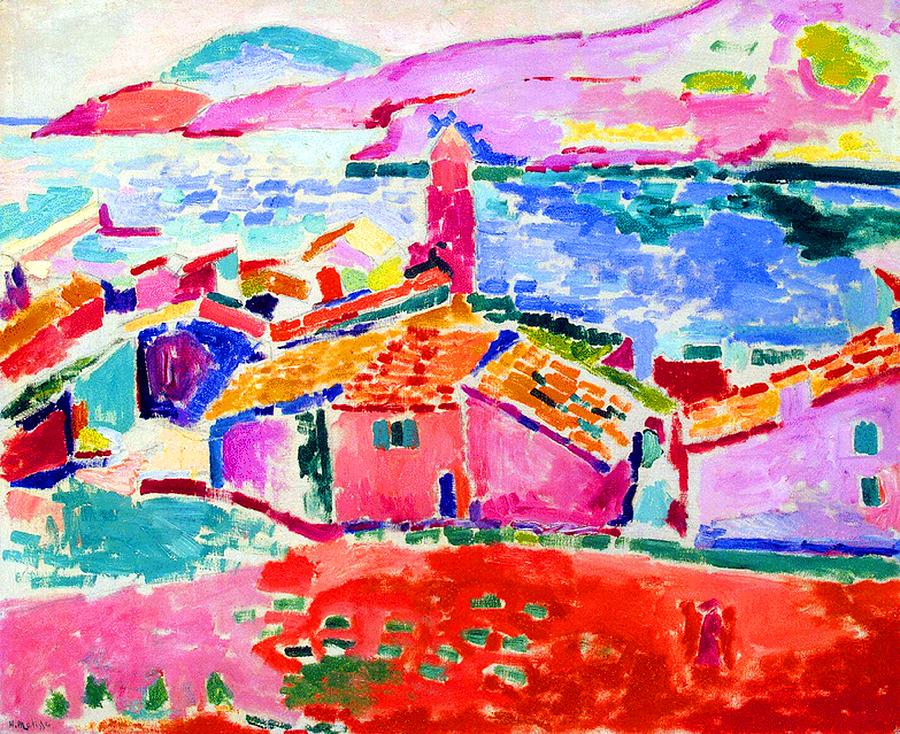
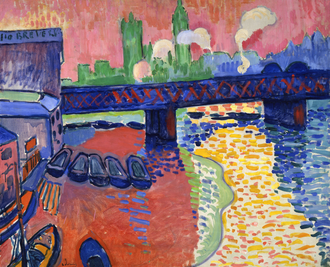
Examples of the Fauvism. On the left a painting of Collioure by Matisse (Les toits de Collioure) and on the right one by Derain (Charing X Bridge, London).
Unfortunately, Vanya was troubled with a sore hip during our stay in Collioure and couldn’t handle the walk into town. We therefore missed out on seeing the place at night but it has given us a reason to return – As if we needed one!
Of course, Collioure is in the former administrative region of Languedoc Roussillon (now part of Occitanie) and any visit to such an area has to include a trip to a local winery whether it be to the likes of Picpoul for a nice dry white or Banyuls, just to the south of Collioure, for it’s famous sweet wines. We broke with convention and sought out Les Vignerons des Alberes.

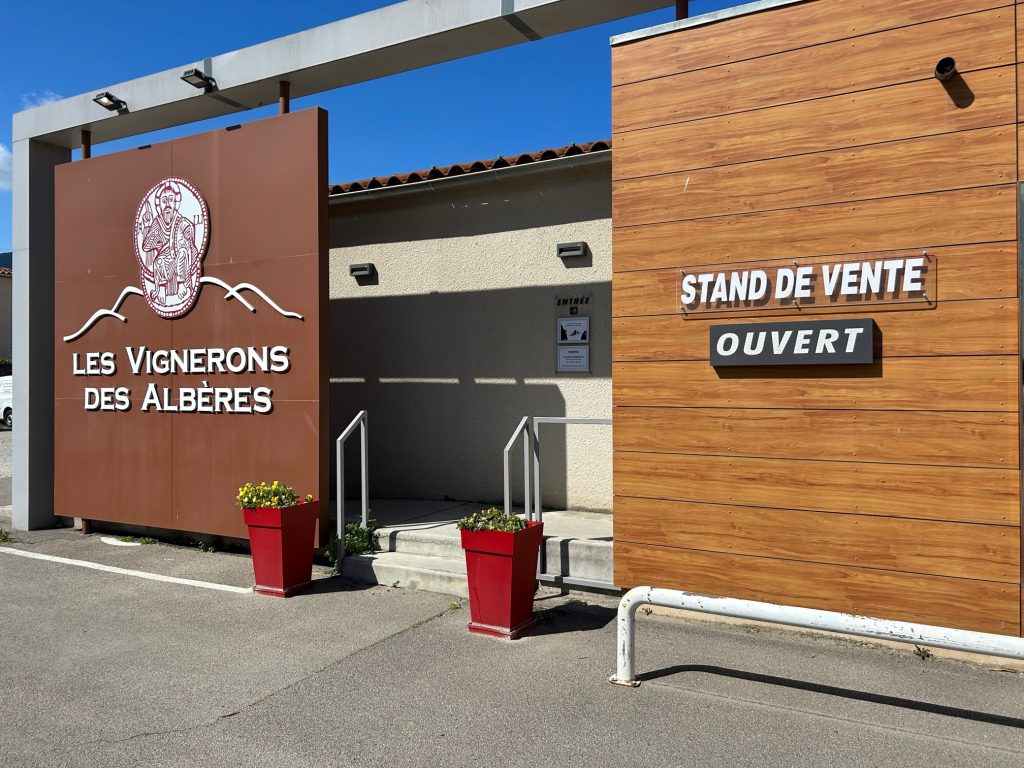
Waiting for our wine in Les Vignerons des Alberes, just outside Collioure. We bought almost 10 litres each of their red and white wines. Their more expensive red is sold in 3 litre boxes and is superb. We will be buying considerably more upon our return.
Yep. Collioure really did it for me and we will definitely return. The only thing I would do differently next time is (a) to take a meal in one of the three Michelin recommended restaurants on the seafront (La Balette has a Michelin Star but Le 5eme Peche and Mamma Les Roches Brunes look equally appealing) and (b) to continue the journey into Spain using the D86 road to Cerbere rather than the motorway. I suspect the coast road will provide some great photo opportunities.
And so onto Spain but, I’ll leave you with one more photo of this lovely town…
